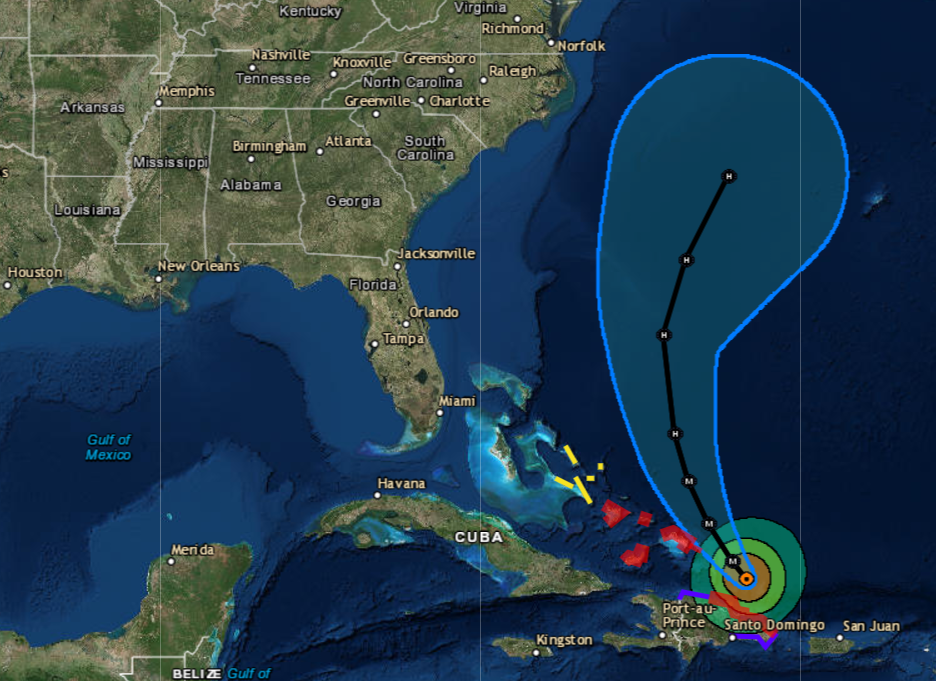- Hurricane Maria ripped through Puerto Rico on Wednesday, making landfall as a powerful Category 4 storm with 155-mph winds, according to the National Hurricane Center. It left 100% of the island without power. Maria hit the island of Dominica at 9:15 p.m. ET on Monday as a Category 5 storm – the first in history there – and reports indicated “widespread devastation.” At least 26 people have been killed by the storm so far on its journey through the Caribbean, just two weeks after Hurricane Irma. The storm is forecast to lash the Dominican Republic on Thursday before targeting Turks and Caicos and the Bahamas on Thursday night and Friday.
The eye of Hurricane Maria crawled toward the Turks and Caicos islands early Friday morning as it gained strength in the Caribbean. Maximum sustained winds increased to 125 mph while the storm moved northwest at 7 mph.
The storm caused widespread destruction in Puerto Rico and continued to soak that island and the Dominican Republic with enough rain to cause life-threatening flash flooding, according to the National Hurricane Center’s 2 a.m. ET update Friday morning.
The storm has left at least 26 people dead in the Caribbean so far, according to reports, but more casualties were expected. The storm pounded Puerto Rico for hours as the third-strongest storm ever to hit US territory.
Puerto Rico’s mountainous terrain slowed down Maria a bit but the storm picked up intensity again after moving back out to sea. The NHC reported in its 5 p.m. update that Maria was a major Category 3 hurricane with sustained winds of 120 mph and higher gusts.
Early reports from Puerto Rico described intense damage. Cellphone communications failed as towers went down. The Puerto Rican emergency-management agency said 100% of the island was without power by Wednesday afternoon and that Maria had damaged "everything in its path," according to reports.
According to the NHC, the "potentially catastrophic" storm is now passing offshore near the north coast of the Dominican Republic, heading toward the Turks and Caicos and southeastern Bahamas. The storm has grown since it left Puerto Rico, with hurricane-force winds extending 60 miles from the center.
Hurricane warnings are in effect for Turks and Caicos, the southeastern Bahamas, and parts of the Dominican Republic. Those locations are likely to see hurricane conditions within the next 36 hours.
Cat 4 #Maria had sustained winds around 155 MPH as it made landfall over #PuertoRico this morning. #GOES16 pic.twitter.com/STkghmAbhi
— NASA SPoRT (@NASA_SPoRT) September 20, 2017
The NHC said preparations for life-threatening storm surge, rainfall flooding, and destructive winds "should be rushed to completion" in areas not yet hit by the storm.
The center has also warned that some of the greatest risks Maria poses come from its storm surge, which is accompanied by "large and destructive waves."
Waters were expected to reach 6 to 9 feet above normal levels in Puerto Rico. In the Dominican Republic, a storm surge of 4 to 6 feet was expected, and the southeastern Bahamas and Turks and Caicos could see 9- to 12-foot surges above normal tide levels.
It's still too soon to say whether the continental US will be in Maria's path after it crosses the Caribbean. Models project Maria will turn north before reaching Florida and it's likely to head out to sea, but meteorologists will be paying attention to anything that could cause Maria to turn back toward the coast.
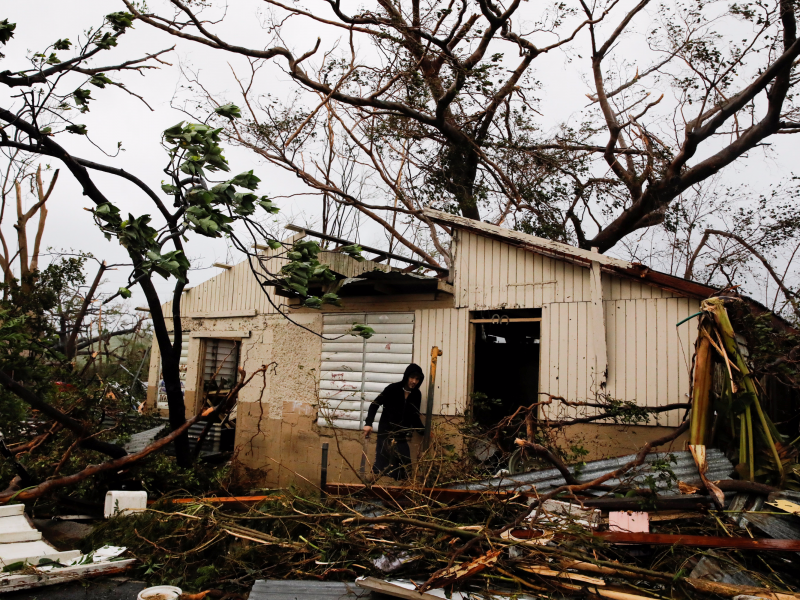
Conditions in Puerto Rico and the Virgin Islands
Maria caused widespread destruction as it engulfed Puerto Rico, where residents were just starting to recover from Hurricane Irma. The island avoided a direct hit from Irma, but its powerful storm surge and winds still caused many residents to lose power.
Maria's direct hit was devastating.
"The San Juan that we knew yesterday is no longer here," Mayor Carmen Yulin Cruz told MSNBC on Wednesday night of the island's capital. The mayor said Puerto Rico, home to some 3.5 million people, was "looking at four to six months without electricity."
Gov. Ricardo Rossello of Puerto Rico announced Wednesday afternoon that he was instituting a curfew from 6 p.m. to 6 a.m. Wednesday through Saturday.
The director of the US Federal Emergency Management Agency, Brock Long, said on CNN on Wednesday morning that 3,200 agency staff members were in Puerto Rico and the US Virgin Islands with supplies, and that they were better prepared in the areas before this storm than they were when Irma hit.
Wind sensors in Puerto Rico on Wednesday morning recorded sustained winds of 81 mph at Yabucoa Harbor and a gust of 118 mph at Camp Santiago, as well as gusts of 113 mph in San Juan. The tide level at Yabucoa was projected to reach 6 to 9 feet above normal, with large and destructive waves.
Wind gauges throughout the island broke, making it impossible to know just how strong the most intense gusts were at the height of the storm.
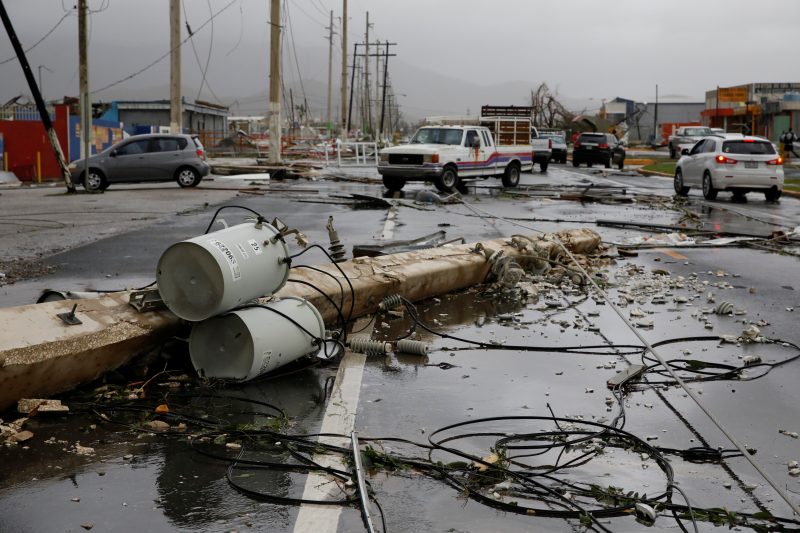
Total rainfall in the Virgin Islands was expected to be between 8 and 12 inches, with isolated areas receiving 16 inches. The NHC said Puerto Rico was still experiencing mudslides and "catastrophic" flash flooding from rainfall on Wednesday evening. Some parts of the island have received more than 35 inches of rain, and torrential downpours continued throughout Thursday.
US President Donald Trump on Thursday signed a disaster declaration for Puerto Rico, making federal disaster-relief funding available to much of the island.
Before the storm arrived the public safety commissioner of Puerto Rico had told those in evacuation zones: "You have to evacuate. Otherwise, you're going to die."
'Take this event seriously'
Maria first made landfall on the island of Dominica on Monday night. Although the destruction is still being assessed, Roosevelt Skerrit, the prime minister of Dominica, wrote on his Facebook page: "Initial reports are of widespread devastation ... The winds have swept away the roofs of almost every person I have spoken to or otherwise made contact with."
The hurricane was the first Category 5 storm in recorded history to hit Dominica, which is home to roughly 70,000 people. The last and only Category 4 storm to directly hit the island nation, Hurricane David in 1979, killed more than 50 people and left 60,000 homeless.
"The roof to my own official residence was among the first to go and this apparently triggered an avalanche of torn away roofs in the city and the countryside," Skerrit wrote on Facebook.
First aerial images emerge showing the damage to the island of Dominica after Hurricane #Mariahttps://t.co/0PsqsN5ygJ pic.twitter.com/wCtgZprc2V
— BBC News (World) (@BBCWorld) September 20, 2017
The bands of the storm also slammed the nearby island of Guadeloupe, causing serious flooding, damage to buildings, and widespread power losses.
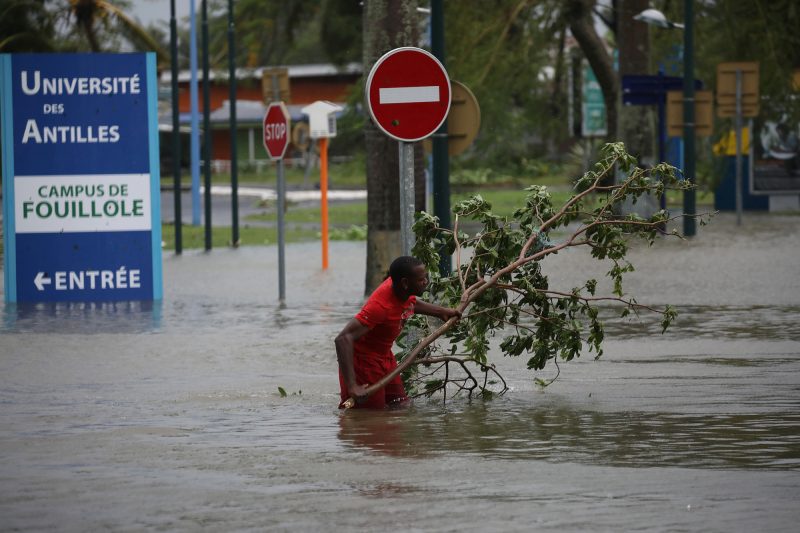
Maria lost some strength as its eye moved over Dominica but quickly regained its Category 5 status Tuesday morning and got even stronger in the afternoon.
Extreme wind in Eyewall !!! #HurricaneMaria #Fajardo pic.twitter.com/ITORN6TFDO
— Mike Theiss (@MikeTheiss) September 20, 2017
On the islands of St. Thomas and St. John in the US Virgin Islands, residents were urged to leave their homes for government shelters, since Irma damaged many houses.
Trump also approved an emergency declaration for the Virgin Islands on Monday, giving FEMA the go-ahead to coordinate disaster relief efforts there. Some of the soldiers who came to the Virgin Islands to provide relief after Irma were evacuated.
"Take this event seriously," Gov. Kenneth Mapp of the US Virgin Islands said at a press conference Sunday. "You cannot stay in those facilities. You will not survive."
He urged people who decided to stay in their homes to write their Social Security numbers on their bodies so they could be identified easily in a worst-case scenario.
St. Croix, the most populated of the US Virgin Islands, took a hit from the outer eyewall, to the right of Maria's eye. According to reports, vegetation was stripped bare by the storm, wind measurement equipment failed, and many were left without power.
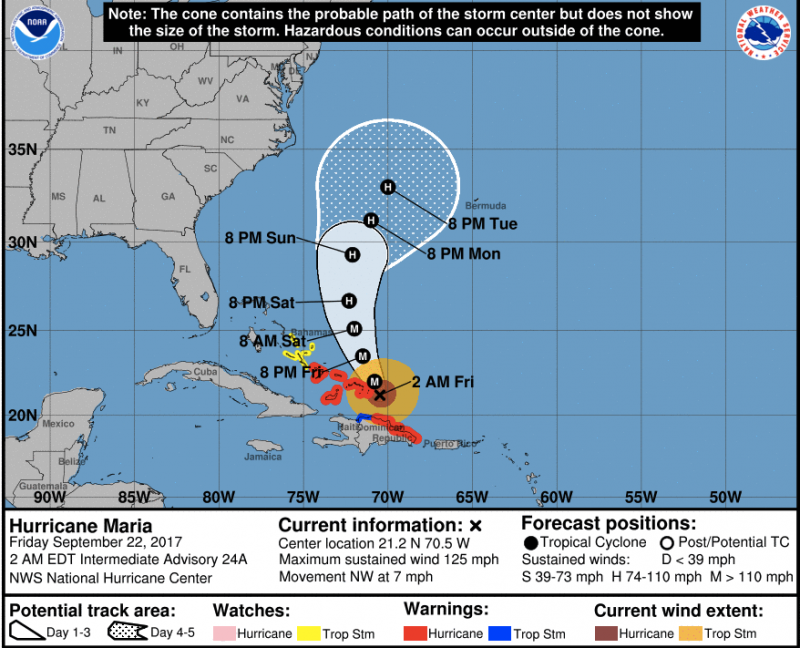
An unusually active hurricane season
Maria is the seventh hurricane of an unusually active Atlantic hurricane season, making this only the ninth year on record with seven hurricanes by September 17. There have been 13 named storms so far - the average by September 18 is 7.6.
Eye of #Maria clearing out on conventional IR. Overall presentation reminds me of #Matthew when it peaked, with numerous eastern bands. pic.twitter.com/T0jVoIb0qG
— Jonathan Erdman (@wxjerdman) September 18, 2017
This season is also significantly ahead of the average measures for major hurricane days and accumulated cyclone energy (a measure of storm strength, duration, and frequency). Maria is pushing those measures even further ahead.
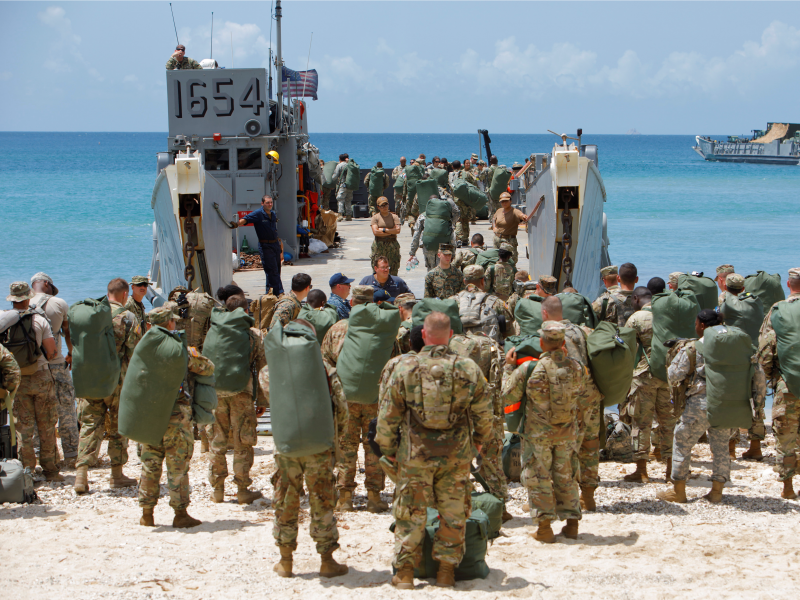
On Friday, Colorado State University's Tropical Meteorology Project issued a two-week forecast of above-normal cyclone activity for the Atlantic basin.
Tropical Storm Jose is stationary near the East Coast but is likely to stay offshore. The storm is nonetheless bringing tropical storm conditions - including winds, rainfall, and dangerous surf - to coastal and Mid-Atlantic areas.
Erin Brodwin, Rebecca Harrington, and Bryan Logan contributed to this post.

